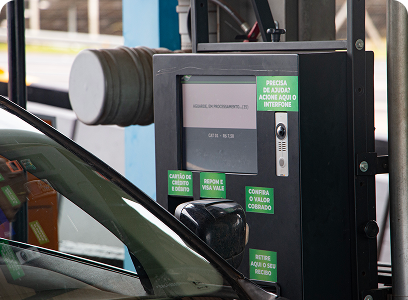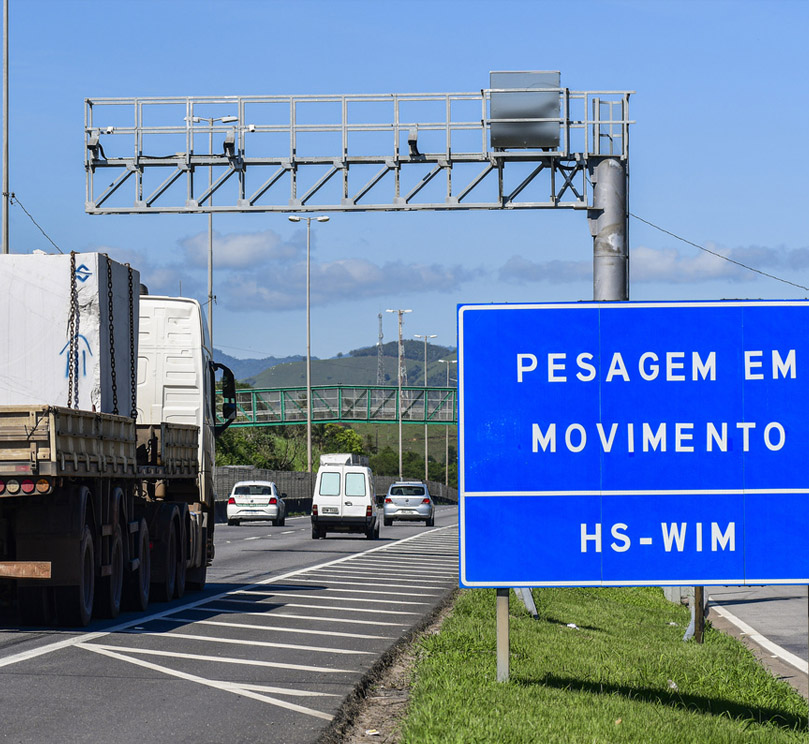AS PART OF OUR STRATEGY
Innovation is part of EcoRodovias’ strategic planning in its pursuit of greater efficiency in management, sustainability, road safety, engineering solutions and highway operations.
Digital transformation is a new vision for the business to drive efficiency through processes, people and technology. At EcoRodovias, digital transformation is aimed at maximizing value quickly, with the focus on organizational efficiency driven by proactive leadership guided by data and applied technology.
In this regard, we seek not only innovation in the ideas and expertise of our internal teams, but also from an entire ecosystem that brings together the market, universities and the government.
Based on this ecosystem and seeking to meet both current and future needs, EcoRodovias strives to drive the development of the sector while always following the best ESG practices.


Learn more about some of our innovation projects
Payment methods, connectivity and sustainability are a few key topics for EcoRodovias, for which several initiatives have been implemented or are under tests at our concessionaries.


Free Flow
Electronic toll collection system that obviates the need for toll booths or for vehicles to halt or reduce speed. The technology, deployed in a pilot project at Ecovias Leste Paulista, allows vehicles to be identified by their license plate or tag (the same used to pass through automatic lanes) and enables more dynamic toll collection methods, such as by distance traveled or different fees for different hours.

Self-Service Toll Plazas
Self-service payment toll booths accept both debit and credit cards to speed up the payment process.
This solution is already available at several concessionaries managed by the Group.

Payment Solutions
EcoRodovias was Brazil’s first Group to accept credit cards at the toll plazas of its concessionaries. The NFC (Near Field Communication) technology ensures safety for all as it allows payments without handling bills. Payments through PIX and digital wallets are already accepted at some units.
Connectivity to provide safety
EcoRodovias always believed in the importance of connectivity for road operations.
For example, the Rodovia dos Imigrantes, a benchmark in Brazilian engineering, has been operating with automatic incident detection (AID) cameras since 2002. This allows any unusual movement inside the downhill tunnels to trigger an alarm and the image of the road stretch is automatically displayed on the main screen at Ecovias Imigrantes’ Operations Control Center. The solution has been implemented in other highways managed by the Group.


SOS
Enables users to seek help or information while on the highway, based on the geolocation of the device and without any data charges.

Whatsapp Assistance
Offers direct interaction between road users and the Operations Control Center of the concessionaires. A chatbot responds to users’ request for information or assistance.

Waze’s Connected Citizens Program
Allows operators at the Operations Control Center to send traffic alerts to Waze users about bottlenecks, construction works and accidents. Users can also use the technology to send notifications to operators at the Centers.

Connectivity with vehicles
In a pioneering partnership with Volvo Cars Brasil, the brand’s vehicles are connected to the Operations Control Center of the group’s highways and send information about the driver’s location and other data in case of an emergency. The technology is triggered automatically when the vehicle’s airbag is deployed.
Sustainability in focus
All EcoRodovias projects follow ESG premises, with the environmental aspect getting special focus among the Group’s innovations.

Solar Energy
EcoRodovias is developing a project to install photovoltaic plants on highways at five Brazilian states to supply energy to both the operations and management of its concessionaires.
The project, which has been fully implemented on the BR-135 highway on the 364-km stretch between Montes Claros (MG) and Curvelo (MG) and on LMG-754, can generate sufficient solar energy to supply 100% of the consumption at Eco135. In Minas Gerais and Goiás, the concessionaires Eco050 and Ecovias do Cerrado are also installing 14 plants that will meet 100% of their consumption. By the end of this year, the Group expects to install 16 more plants.

Electric Vehicles
EcoRodovias has established a partnership with Volvo Car Brasil, by which the latter will install charging stations for electric cars at the user service bases of its concessionaires.
Some stations with Wallbox equipment have already been installed along the Ayrton Senna/Carvalho Pinto corridor and other stations will soon be installed on other highways managed by the Group. The stations will provide emergency charges for vehicles of any brand at no cost for highway users.
Inspection
Weigh-in-Motion
A pilot project at Ecovias Cerrado that uses high precision scales to capture the weight of trucks in movement. This innovation enables more efficient inspections of excess cargo and smoother traffic flow.

